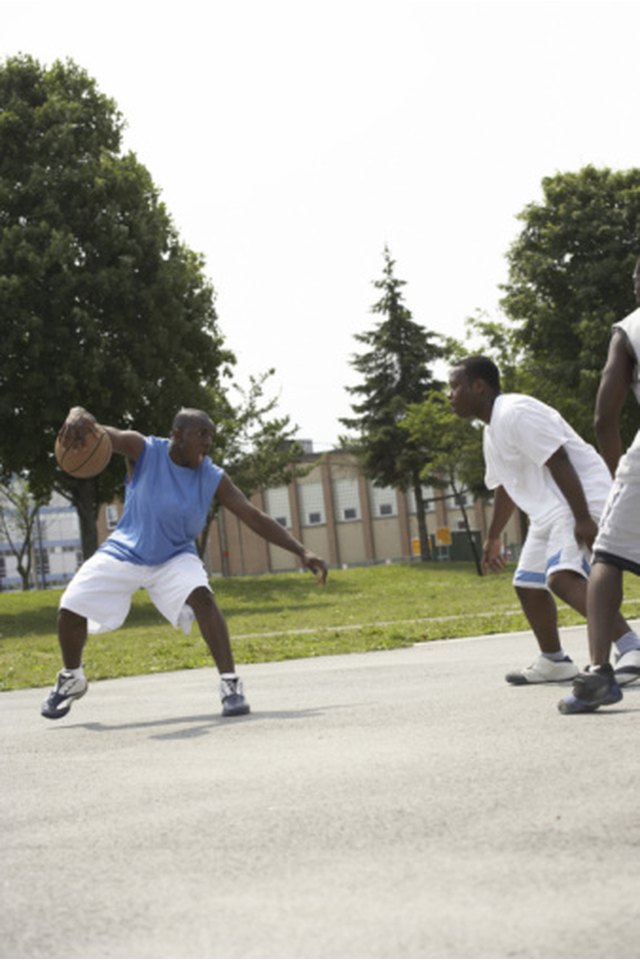Moving Pick in Basketball Rules

The well-set pick, also known as a screen, is a key basketball tactic. Within limitations, offensive players can use their bodies to impede defensive players. But referees will call "moving pick" or "illegal screen" fouls for a variety of transgressions. Such calls result in a personal foul and either the loss of ball possession for the offense or free throws for the victim, depending on the situation and playing level.
Setting the Pick Too Late
An offensive player can move into the path of a moving opponent to set a pick. But the player must give that opponent enough room to stop or change directions. Referees use the speed of the play to judge how much room the opponent must get. A good rule of thumb is to give the target at least a full second to respond, which usually equates to one or two strides.
Improper Blind Pick
Setting backside picks on stationary defenders is allowed. But the player setting such a "blind" pick must give the opponent enough space to turn around and react. One step is the generally accepted margin. By setting the pick to the defender's side instead of the backside, a player can park within inches of the stationary target without drawing a foul for crowding.
Improper Body Position
While setting a pick, a player must face the target in an upright and stationary position. To be safe, a player should set his feet no more than shoulders-width apart. Players are allowed to set wider picks in some levels and leagues, but that is not universal. Sliding over to initiate contact is against the rules, as is extending a shoulder, arm, hip or leg outside the vertical plane of the body. Players setting a good legal pick should take the contact squarely with their chest.
Excessive Use of Hands
Karl Malone set some of the best picks in NBA history. He was also notorious for clutching and grabbing his targets. This is against the rules, of course, and officials usually look for it. Some coaches teach players to set their picks with their arms tucked snugly against their shoulders. This helps them brace for contact and resist the urge to shove or hold. If players keep their arms away from their body while setting picks, they can give the appearance of pushing even if they aren't breaking the rules.
Failure to Properly Hold Picks
Good picks can turn into moving picks when they aren't finished correctly. After the initial contact, the player setting the pick isn't allowed to slide with the opponent to prolong the contact. Such offensive fouls are easily detected and called. On the other hand, players setting picks can move slightly while bracing for the initial contact -- as long as they aren't initiating contact with that late movement.
Paying for Big Collisions
When heftier players anchor down and level smaller players with a firm pick, they become vulnerable to foul calls. Referees may react to bone-rattling collisions even if the pick is technically clean. "The officials have made their minds up that you can't set a crushing pick," former NBA center Jim Chones complained to The Plain Dealer newspaper during the 2010-11 season. " If a guy runs into you hard, 90 percent of the time they call it against the person setting the pick." Enforcement of the rule doesn't always match the letter of the rule.
References
Resources
Writer Bio
Jeff Gordon has been reporting and writing since 1977. His most recent work has appeared on websites such as eHow, GolfLink, Ask Men, Open Sports, Fox Sports and MSN. He has previously written for publications such as "The Sporting News" and "The Hockey News." He graduated from the University of Missouri-Columbia School of Journalism in 1979 with a bachelor's degree.
